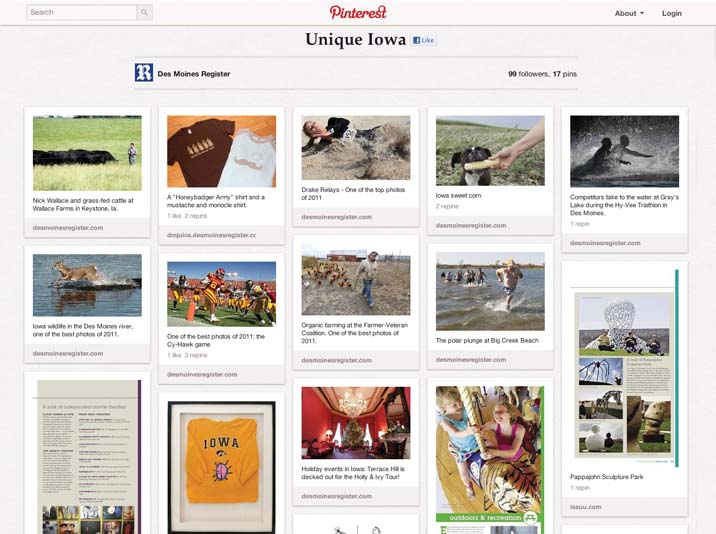Bruning: Pinterest, aka the modern-day 4-H
January 13, 2012
A new Internet phenomenon has taken over open laptops in classrooms everywhere. It is called Pinterest and describes itself as an “online pinboard.” Users are encouraged to “pin” items from external websites onto their own personal, categorized “boards.”
I was very hesitant at first. I’ve resisted joining Twitter in hopes that I wouldn’t waste even more time online. However, last semester I needed to find inspirational images for a class, so I decided to check Pinterest out.
My younger cousins and pretty much every other girl I met raved about the site, so I decided to request my invitation and got to pinning.
Pinterest certainly served its purpose for that project. It was easy to find more artistic images than what would be readily available with a Google search, and it made my homework pretty simple. In the course of it, I found a few good recipes, some homemade Christmas gift ideas and a great experiment with fire that I tried with my brother and dad when I went home for break (it was unsuccessful and resulted in me almost being set on fire, but it was fun nonetheless).
I would spend a few minutes here and there looking through the plethora of ideas on this online forum. As I continued looking, though, it occurred to me that this was simply an online version of 4-H.
For those of you unfamiliar with 4-H, it is a youth program started by Iowa State Extension in 1902. Towns across Iowa — and America — have clubs with members ranging from fourth to 12th grade that meet on a monthly basis. It stresses volunteering, leadership and communication skills, as well as encourages members to explore their own personal interests in areas such as photography, fashion, agriculture, livestock, recycling and more through researching and developing their subject, then presenting it at the fair.
I was a nine-year member of the Mapleton Starspinners 4-H Club, pledging my head to greater thinking, my heart to greater loyalty, my hands to larger service and my health to better living for one Saturday of every month and exhibiting my projects at the annual county fair. I sewed clothes, made jewelry and entered photos and projects at the fair to be judged every year.
Instead of just linking random websites to my page, I made them and shared the final project with my peers.
Some aspects of Pinterest are great. Fashionistas compile their styles, photographers swap techniques and ideas and foodies trade ideas.
But I fear that this is just one more example of trading human interaction for staring at a computer screen.
Instead of strutting down a runway in front of judges in the Clothing Selection or Fashion Review competition, we post digital photos of outfits online. Instead of giving a presentation on how to make a cake, we post the step-by-step instructions online. Instead of exhibiting and having photos judged, we post them online.
It strips art of its element of communication. We are denied the opportunity to discuss and defend our work. While the potential for sheer quantity of people and ideas we can reach is much higher than a small-town 4-H Club, we are still robbed of the simple pleasure and necessity of human interaction.
Create and share, whether it be online or face to face. Art is meant to be seen. But consider an emphasis on your own local world rather than the faceless masses online.







